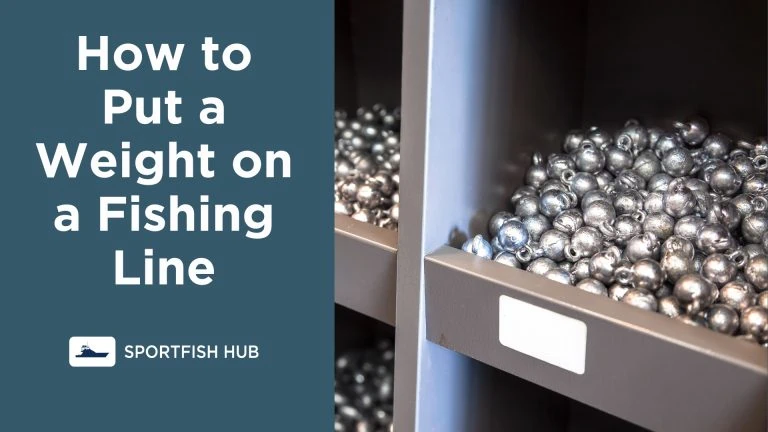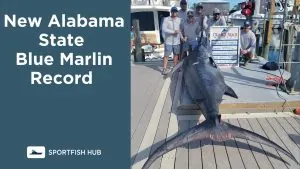Putting a weight on your fishing line is essential for getting your bait and lures down to the desired depth and keeping them there. The right amount of weight will allow your bait to move naturally with the current while preventing snags on the bottom.
This comprehensive guide covers everything you need to know about how to put a weight on a fishing line.
Key Takeaways:
- Use split shot weights for shallow water panfish and trout fishing. Position 1-2 small split shots 1-2 feet above the hook.
- Add rubber core sinkers for fishing deeper waters. Twist them onto the line 2 feet above the hook.
- Slide egg and bullet sinkers onto the main line and attach a leader for bottom fishing.
- Tie a leader to a heavy pyramid sinker for deep trolling and surf fishing.
- Adjust weight based on depth, current strength, and type of bait. Too much weight sinks the bait unnaturally.
- Carry an assortment of different weights to adapt to changing conditions.
- Pinch split shots onto the line carefully with pliers to avoid damaging the line.
- Attach weights farther from the hook for sinking baits, closer for floating lures.
- Use fluorocarbon leader lines to prevent snags and avoid detection.
Table of Contents
- Key Takeaways:
- How to Attach Weight To Fishing Line
- Fishing Line Weight Tips
- Types of Fishing Sinkers and Weights and Where to Use Them
- How Much Weight to Use
- Getting Started with Proper Gear
- Technique Tips for Attaching Weights
- Presenting Bait Naturally
- Leader Lines Help Prevent Snags
- Fishing Tips for Weighting Your Line
How to Attach Weight To Fishing Line
Below, I will write down the necessary steps for attaching wights to fishing line. If you are unsure about which type of weights you have or which type of weight to use, we have a guide on that below.
Split Shot Weights
- Place 1-2 small split shot weights 1-2 feet above the hook for shallow water fishing.
- Use pliers to pinch the split shot closed on the line. Be careful not to pinch too hard.
- Test the hold by lightly tugging the line. Readjust if the weight slides.
Rubber Core Sinkers
- Thread the line into the rubber core sinker 2 feet above the hook.
- Twist the rubber ends in opposite directions to secure the sinker to the line.
- Untwist to remove or reposition on the line.
Egg and Bullet Sinkers
- Slide the egg or bullet sinker onto the main line above a swivel stop.
- Tie on a 12-18 inch leader and hook to the other side of the swivel.
- Use a bead stop above the sinker if needed.
Pyramid Sinkers
- Tie an overhand loop knot onto your line, 4 inches up the leader line.
- Thread the loop up through the sinker’s ring.
- Pull the loop over the bottom of the sinker and tighten.
- Attach the weighted leader to a 3-way swivel on the main line.
Fishing Line Weight Tips
- Carry an assortment of split, egg, and bullet weights to change up as needed.
- Position the weight closer to the hook for floating baits, farther for sinking baits.
- Add just enough weight for a natural presentation. Too much sinks the bait.
- Check that knots and line can handle the weight for big fish species.
- Remove weights when landing a fish to prevent break-offs at the weight.
- Adjust weight pound test to the line strength – don’t use heavy weights on light line.
Types of Fishing Sinkers and Weights and Where to Use Them
| Sinker Type | Attachment Method | Pros | Cons |
|---|---|---|---|
| Split Shot | Pinch onto line | Adjustable, easy to add/remove | Can damage line if pinched too tight |
| Rubber Core | Twist onto line | Interchangeable, reusable | Bulkier for storage, slower to remove |
| Egg & Bullet | Slide onto main line | Streamlined, snag resistant | Need swivel & leader to prevent slipping off |
| Pyramid | Tie to leader | Heavy for deep water, stays put | Takes more time to attach/remove |
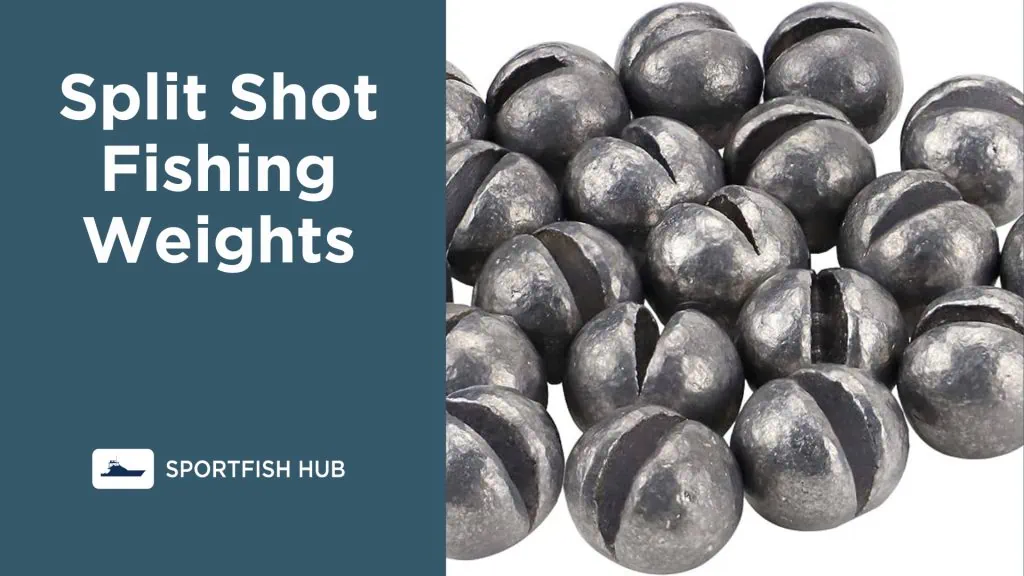
Split Shot Weights: Excellent for shallow water panfish and trout. Use 1-2 small split shots 1-2 feet above the hook. Pinch them on with pliers.
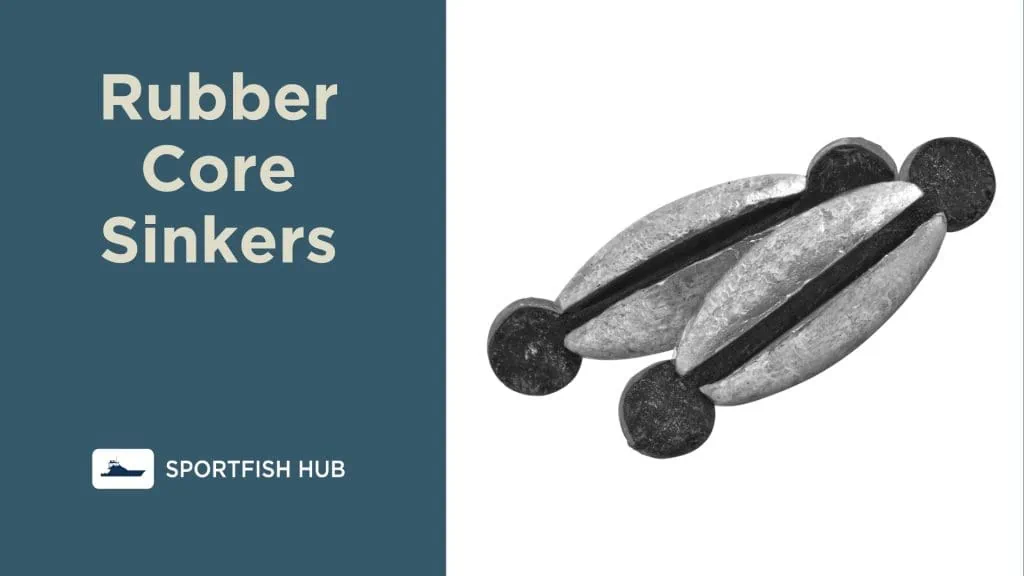
Rubber Core Sinkers: Long cylinders with a rubber liner to twist onto the line. Allows quick weight changes for deeper waters. Place 2 feet above the hook.
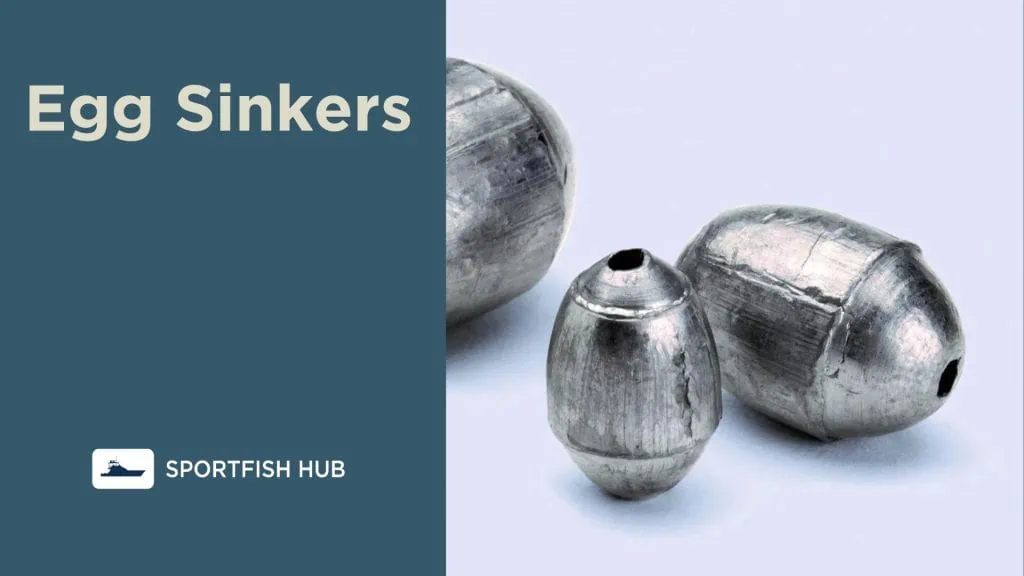
Egg Sinkers: Designed to slide on the main line for bottom fishing. Use a swivel and leader to keep it from sliding off. Great for currents.
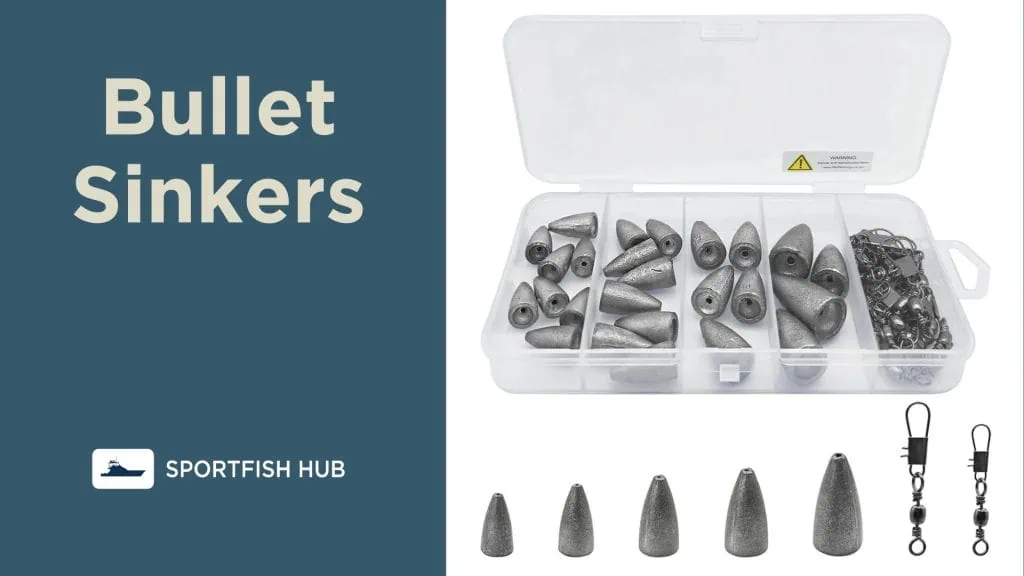
Bullet Sinkers: Similar to egg sinkers but heavier for big fish in deep water. Allow longer casts.
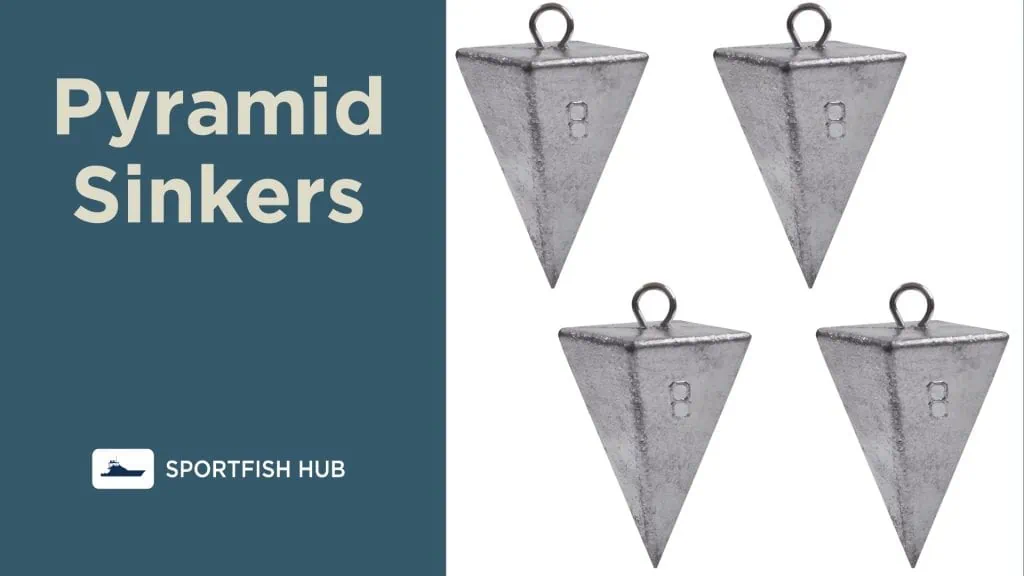
Pyramid Sinkers: Heavy weights tied to a leader for surf fishing and deep trolling. Let them rest on bottom.
How Much Weight to Use
The amount of weight needed depends on the depth, current strength, type of bait, and size of hooks and sinkers. Here are some general guidelines:
- Shallow water (under 6 ft): Use split shots or a few small rubber core sinkers.
- Moderate depths (6-15 ft): Start with a 1/4 to 1/2 oz egg or bullet sinker.
- Deep water (over 15 ft): Use at least a 1 oz egg sinker or 3-5 oz pyramid sinker.
- Slow currents: Less weight is needed to reach bottom.
- Fast currents: More weight required to hold the bait down.
- Live bait: Enough to sink bait but not impede movement.
- Artificial lures: Just enough to reach target depth.
| Depth of Water | Current Strength | Type of Bait | Hook/Sinker Size | Recommended Weight |
|---|---|---|---|---|
| 0-6 ft (shallow) | Slow | Live bait | Small | 1-3 split shot weights (approx. 1/8 oz total) |
| 0-6 ft (shallow) | Slow | Artificial lure | Small | 1-2 split shot weights (approx. 1/16 oz total) |
| 6-15 ft (moderate) | Slow | Live bait | Medium | Egg sinker 1/4 to 1/2 oz |
| 6-15 ft (moderate) | Slow | Artificial lure | Medium | Egg sinker 1/4 oz |
| 15+ ft (deep) | Slow | Live bait | Large | Egg sinker 1+ oz |
| 15+ ft (deep) | Slow | Artificial lure | Large | Egg sinker 3/4 to 1 oz |
| 0-6 ft (shallow) | Fast | Live bait | Small | Rubber core 1/8 to 1/4 oz |
| 0-6 ft (shallow) | Fast | Artificial lure | Small | 2-3 split shot approx. 1/8 oz total |
| 6-15 ft (moderate) | Fast | Live bait | Medium | Bullet sinker 1/2 to 1 oz |
| 6-15 ft (moderate) | Fast | Artificial lure | Medium | Bullet sinker 1/4 to 1/2 oz |
| 15+ ft (deep) | Fast | Live bait | Large | Pyramid sinker 3-5 oz |
| 15+ ft (deep) | Fast | Artificial lure | Large | Pyramid sinker 1-3 oz |
Too much weight will make the bait behave unnaturally and be less enticing to fish. Start with lighter weights and move up until your bait presentation is optimal.
With the proper tackle and techniques, you’ll have your bait and lures bouncing along at just the right depth to attract fish. Stay flexible with weight changes for different situations. The more time your bait spends in the strike zone, the more hookups you’ll get!
Changing Your Tackle
When you need to change your lures or bait, simply cut the end of your line above the hook or swivel and re-tie new terminal tackle. Examining the end of your line periodically lets you watch for fraying and damage. Replace line as needed for the best performance.
Please let me know if you would like me to add one of these examples or another section incorporating “end of your line” to the article! I can update the text with your preferred placement.
Getting Started with Proper Gear
Before an angler hits the water, it’s important to have the proper gear and valid fishing license. This includes having the right tackle box filled with essentials like:
- Split shot weights
- Rubber core sinkers
- Egg sinkers
- Other tackle needed to rig lines and attach weights
Having the proper selection of weights and sinkers makes it easier to adapt your setup as conditions change.
Technique Tips for Attaching Weights
When using split shot weights for shallow water fishing, anglers should:
- Pinch them onto the line with needlenose pliers.
- Be careful not to squeeze too hard or you may damage the line.
For deeper water, try:
- Rubber core sinkers twisted onto the line.
With sliding sinkers, simply:
- Slide them onto the main line above a swivel stop.
No matter the method, gently tug on the line after attaching weights to ensure they won’t slide up and down.
Presenting Bait Naturally
Proper weighting helps present baits and lures naturally to get more bites.
- Attach weights farther from hooks on sinking baits so they sink slowly.
- For floating lures, keep split shots closer to the hook to suspend them at the ideal depth.
Adjust weight as needed until your bait mimics natural movement with the current. And don’t use more weight than necessary – that will make the bait sink unnaturally.
Leader Lines Help Prevent Snags
When bottom fishing, use a leader line between your main line and hook. Leaders allow baits to float slightly above sliding weights along the bottom. This helps prevent snags in heavy cover.
Fluorocarbon leader material is less visible than monofilament, making it less likely to get noticed by wily fish.
Fishing Tips for Weighting Your Line
- When attaching split shot or rubber core sinkers, gently slide the sinker onto your line before securing in place. This prevents damaging the line.
- For sliding sinkers like egg weights, make sure to slide the sinker onto the main line above the swivel to prevent it slipping off.
- Attach sinkers carefully and securely, testing with light tugs. A loose sinker can slide down and get caught or tangled.
| Sinker Type | Attachment Method | Pros | Cons |
|---|---|---|---|
| Split Shot | Pinch onto line | Adjustable, easy to add/remove | Can damage line if pinched too tight |
| Rubber Core | Twist onto line | Interchangeable, reusable | Bulkier for storage, slower to remove |
| Egg & Bullet | Slide onto main line | Streamlined, snag resistant | Need swivel & leader to prevent slipping off |

